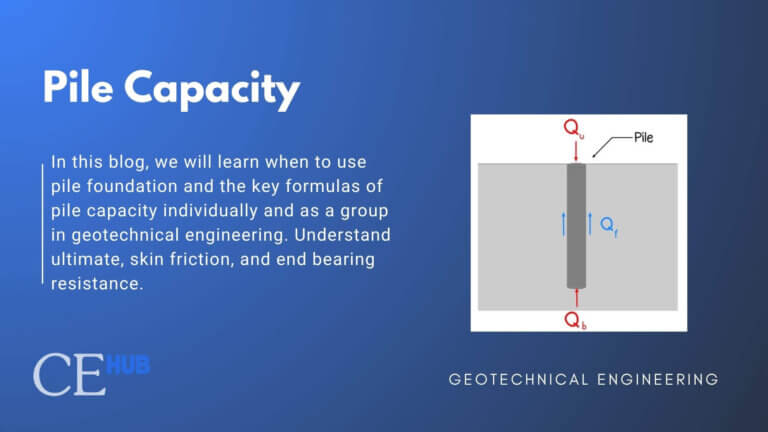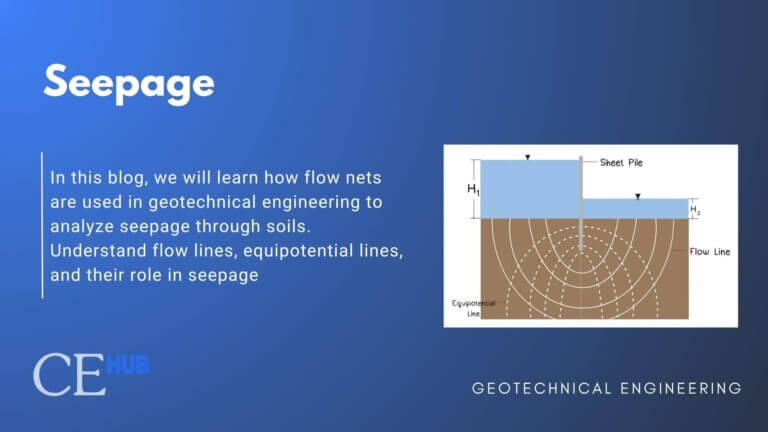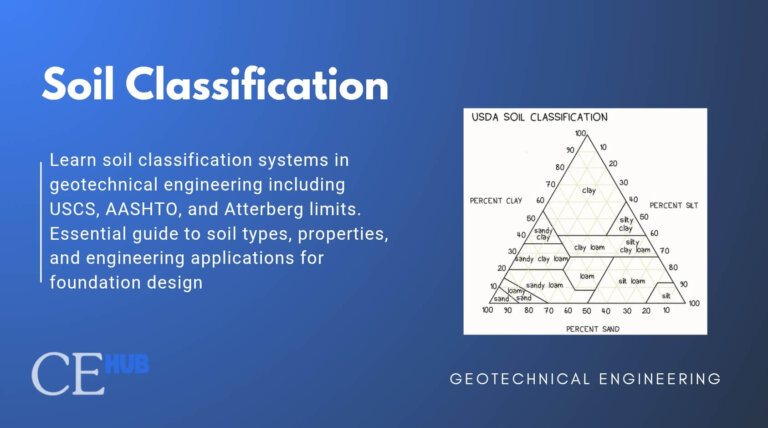Lateral Earth Pressure in Geotechnical Engineering
What is Lateral Earth Pressure in Geotechnical Engineering?
Lateral Earth Pressure is the horizontal stress exerted by soil against earth retaining structures like retaining walls, excavations, and foundations.
It varies based on wall movements and soil conditions, directly affecting structural stability and design requirements.
Why Lateral Earth Pressure matters?
Incorrect estimation of lateral earth pressure may lead to structural failures, collapse, wall deflection, safety hazards, or even worse fatalities.
Types of Lateral Earth Pressure?
There are three categories based on wall movement and soil response.
1. At Rest Pressure
Occurs when there is no lateral movement of the soil mass. The wall is completely rigid.
![]()
For Normally Consolidated Soil (Jacky’s Equation)
![]()
For Overconsolidated Soils
![]()
2. Active Earth Pressure
Develops when the retaining structure moves away from the soil
![]()
![]()
![]()
3. Passive Earth Pressure
![]()
![]()
Rankine’s Theory, 1857
- Assumes a planar failure surface
- Consider soil friction angle and soil weight
Active Earth Pressure
when ![]()
Passive Earth Pressure
when ![]()
Coloumb’s Theory, 1857
- Assumes a planar failure surface inclined at angle θ to the horizontal
- Accounts for friction between soil and wall (wall adhesion and friction)
- More accurate for walls with significant friction
Active Earth Pressure
Passive Earth Pressure
Lateral Earth Pressure on Retaining Walls
What are the main types of retaining walls?
Retaining walls are structured designed to prevent lateral movement of earth or other materials, classified by their structural configuration and stability mechanism
1. Gravity Retaining Wall
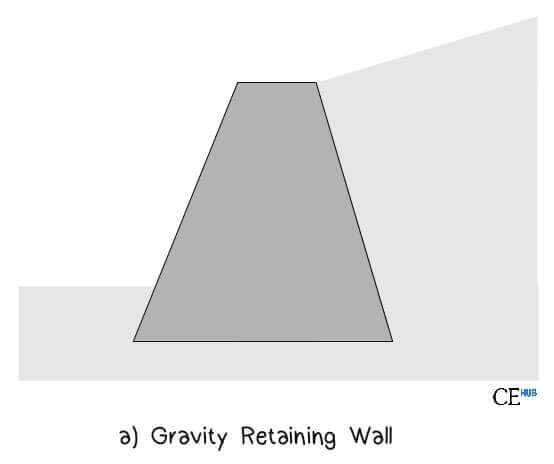
- Built of plain concrete or masonry
- Depends only on its own weight for stability
- Suitable for heights at 3-4 meters
- Simple Construction
2. Semi Gravity Wall
- Gravity wall with wider base (toe or heel)
- Increased stability due to extended base
- Less concrete compared gravity walls
- Suitable for medium heights (4-6 meters)
3. T-Shaped Cantilever Wall
- Most common cantilever wall design
- Stem cantilevers from base slab
- Backfill weight contributes to stability
- Economical for heights of 3-8 meters
4. L-Shaped Cantilever Wall
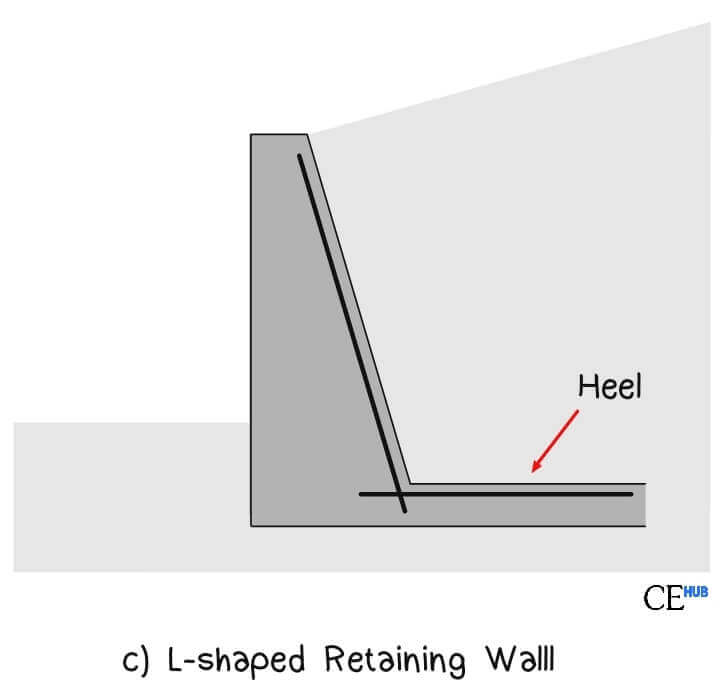
- Used when property line restrictions exist
- No heel extension behind wall
- Less stable than T-shaped walls
- Requires larger toe for stability
5. Counterfort Retaining Wall
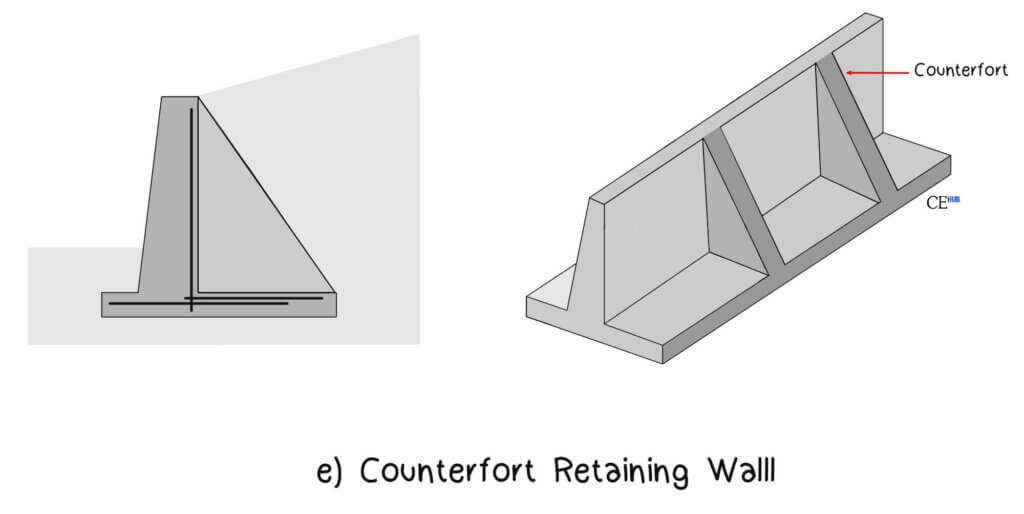
- Has three main components
- Base
- Stem
- Counterforts
- Counterforts provide additional support
- Suitable for heights greater than 8 meters
- Reduced material usage for tall walls
Lateral Earth Pressure Distribution
Pressure distribution describes how lateral earth pressure varies with depth along a retaining wall. Rather than a single force value, it is important to know:
- How pressure changes from top to bottom
- When maximum pressure occurs
- The shape of the pressure diagram
- The location of the resultant force
In general, lateral earth pressure behaves the same as hydrostatic pressure.
- The deeper it is, the value is greater.
- Zero value at the surface (assuming no surcharge)
- Linear distribution between two boundaries
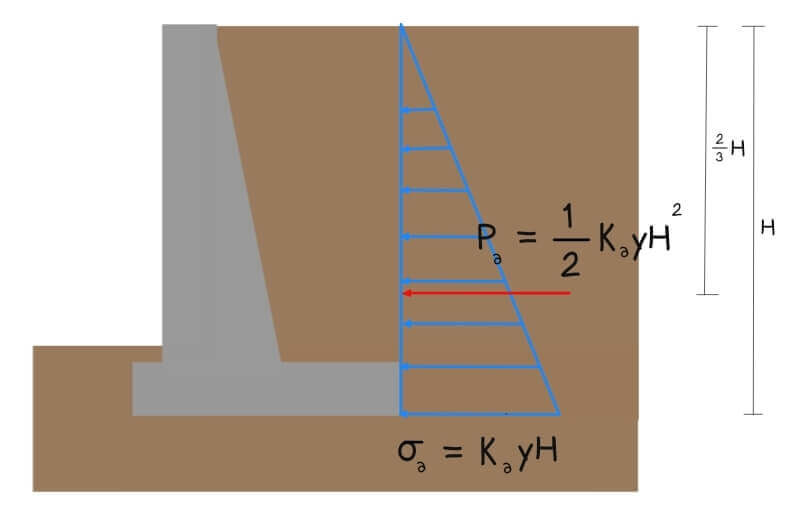
In this Linear Distribution where it is cohesionless soil, pressure increase linearly with depth.
The resultant location from base:
The line of action of this resultant is located at the centroid of the triangular distribution where it is H/3.
![]()
Lateral Pressure
![]()
Where: ![]()
![]()
![]()
![]()
In most cases, the backfill is inclined in some angle with respect to the horizontal, therefore the pressure distribution and the resultant are also inclined at that same angle.
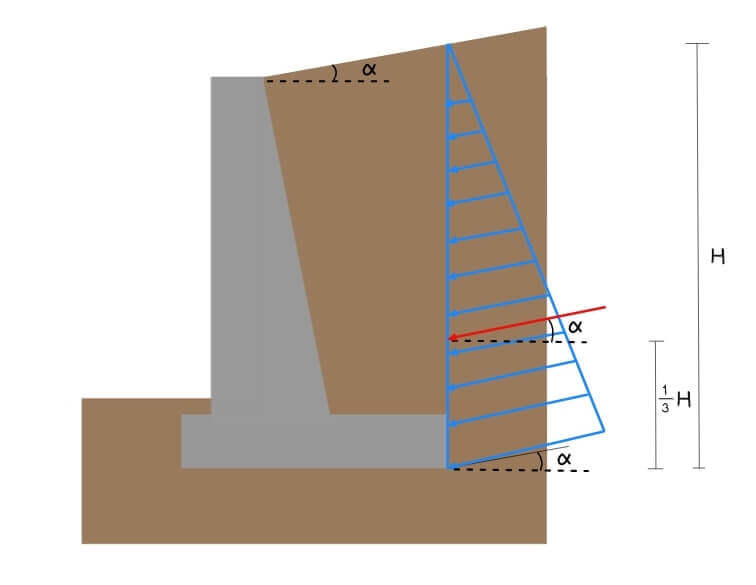
What factors of safety are required for retaining wall design?
Retaining walls must satisfy stability requirements against sliding, overturning, and bearing capacity failure.
a. Factor of Safety against Sliding
![]()
b. Factor of Safety against Overturning
![]()
c. Bearing Capacity
Ensure foundation soil can support wall loads
References:
Principles of Geotechnical Engineering. Braja M. Das
Essentials of Soil Mechanics and Foundations ( 7th Edition). David F. McCarthy
Geotechnical Enfgineering – Principles and Practices (2nd Endition). Coduto, Yueng, and Kitch.

